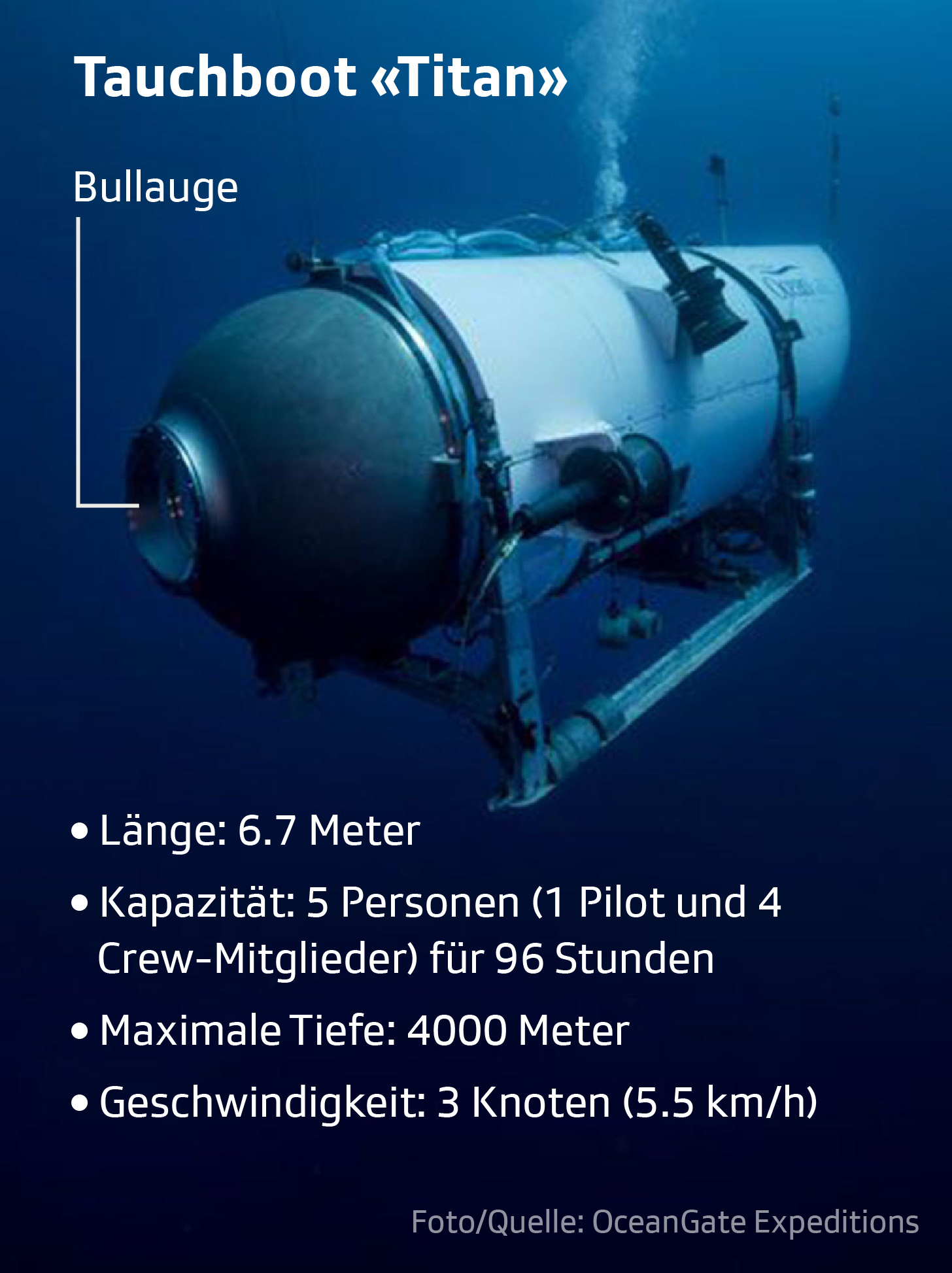Contents
It’s not just oxygen that’s lacking in the deep sea. Submarines have to overcome a whole series of challenges.
In the depths of the ocean there is immense water pressure, darkness and bitter cold. So without protection there is certainly no place for us humans to stay. The oxygen on board the missing “Titan” submersible should last for 96 hours in an emergency, i.e. until around Thursday noon. Supplying the crew with oxygen is just one of the many challenges that submarines and submarines have to overcome.
increased pressure
At a depth of 4,000 meters, the maximum diving depth of the “Titan”, the pressure is 400 times higher than on the surface. Here a whole 400 kilograms press on a square centimetre, which is smaller than a fifty centime coin. To withstand this, submersibles usually have two hulls: an outer, watertight, and an inner, very strong and resistant. Thanks to this double-walled “pressure hull”, every submarine becomes a sealed environment where the usual atmospheric pressure always prevails.
The pressure hull of the «Titan» consists of carbon fiber and titanium. According to the submarine provider Oceangate The proprietary RTM system (Real Time Hull Health Monitoring) checks the integrity of the hull in real time: acoustic sensors and strain gauges analyze how pressure changes affect the hull.
complete darkness
At the latest from 1000 meters below the water surface, where the actual deep sea begins, it is pitch black. Here, submarines navigate with various systems, including GPS and echo sounders. With the latter, sound pulses are sent out into the sea, which are reflected by the seabed or other submarines. This system is currently also being used to search for the «Titan».
no oxygen
A lack of oxygen in the depths of the sea is not only a problem for the crew, but also for the engine. Gasoline and diesel engines require an oxygen supply to function. Early military submarines used breathing tubes, i.e. snorkels, to supply their engines with oxygen from the air. This significantly limited the diving depth.
Today, most submarines work with a combined diesel-electric drive. At or just below the surface, the submarines charge their batteries via diesel-powered power generators. Submerged, the boats then rely entirely on the batteries. The latter drive an electric motor, which in turn drives the submarine’s propellers.
Lifesaver Oxygen
Oxygen cylinders not only ensure that the crew can breathe. Should the propellers fail, a submarine can also reach the surface thanks to oxygen. During descent, the spaces between the two hulls, also known as ballast tanks, are filled with water. In the event of an emergency ascent, these ballast tanks can be blown out with compressed air – which results in positive buoyancy and thus a rapid ascent to the surface.
Whether the “Titan” made it to the surface is not yet known. Even if you do, the limited oxygen is a problem. Because the crew cannot open the hatch. In contrast to other submersibles, the hatch on the “Titan” is bolted.
